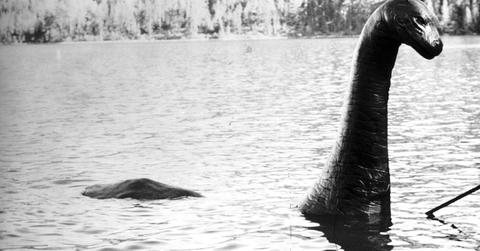Loch Ness Monster Mystery Solved? New Tests Show Nessie Could Be 'Giant Algae Blob Monster'

The legend of the Loch Ness Monster has been around since the sixth century.
Dec. 5 2023, Published 1:23 p.m. ET
The Loch Ness Monster has been a topic of intense speculation for centuries, with various theories circulating about its existence, but Dragonfly Films, the creators of the docuseries Weird Britain, has made an especially intriguing claim.
According to Metro, the filmmakers suggested the unconventional theory that recent water sample tests indicate the Loch Ness Monster, also known as "Nessie," may be algae-based.
The hypothesis's origin traces back to a reported sighting by Matty Wiles, 49, and Aga Balinksa, 42. The pair claimed to have seen two humps and a potential head during an early morning swim in Scotland's Borlum Bay in Ness Lake. These observations preceded the most significant Loch Ness Monster hunt in the last 50 years, Metro reported.
After capturing photos and videos of their eery encounter, Wiles and Balinksa shared their findings with Loch Ness Exploration, the group leading the search.
After learning about the incident, Dragonfly Films producers collected environmental DNA samples in the area. Recognizing that all living organisms leave forensic traces behind, the filmmakers attempted to analyze the samples to come up with conclusive evidence about Nessie's existence.
After testing the materials, the filmmakers were surprised to find two types of algae, organisms that exhibit characteristics of both plants and animals.
While commonly mistaken for plants due to their photosynthetic abilities, algae is classified as a protist. Although algae is known to be prevalent in bodies of water, the discovery of such a substantial concentration is unprecedented — until now.
TV presenter and cryptozoologist Ken Gerhard expressed excitement about the findings, suggesting the possibility the Loch Ness monster could be a “giant algae blob monster.”
Utilizing environmental DNA (eDNA) analysis techniques, the filmmakers asserted that the identification of algae offers a groundbreaking way for wildlife researchers to potentially solve longstanding, confounding mysteries of the natural world.
Despite skepticism surrounding eDNA, the technology has proven fruitful in the past, such as when a Brazilian frog thought to be extinct since 1968 was rediscovered. Additionally, a team in Wales used eDNA to locate an insect also believed to be extinct, Metro reported.
Never miss a story — sign up for the Front Page Detectives newsletter. Be on the scene the moment news breaks.
Tim Whittard, producer of Weird Britain, believes the eDNA analysis could be a valuable tool for aquatic inventory and monitoring programs.
The Loch Ness Monster, with its first reported sighting dating back to the sixth century, has been a subject of numerous claims, some of which have been debunked. Recent alleged sightings add yet another layer to the ongoing mystery surrounding the possibly mythical creature.
Whether Nessie is a legendary monster or an algae-based phenomenon, the debate continues, fueled by both skepticism and compelling discoveries.
Become a Front Page Detective
Sign up to receive breaking
Front Page Detectives
news and exclusive investigations.
